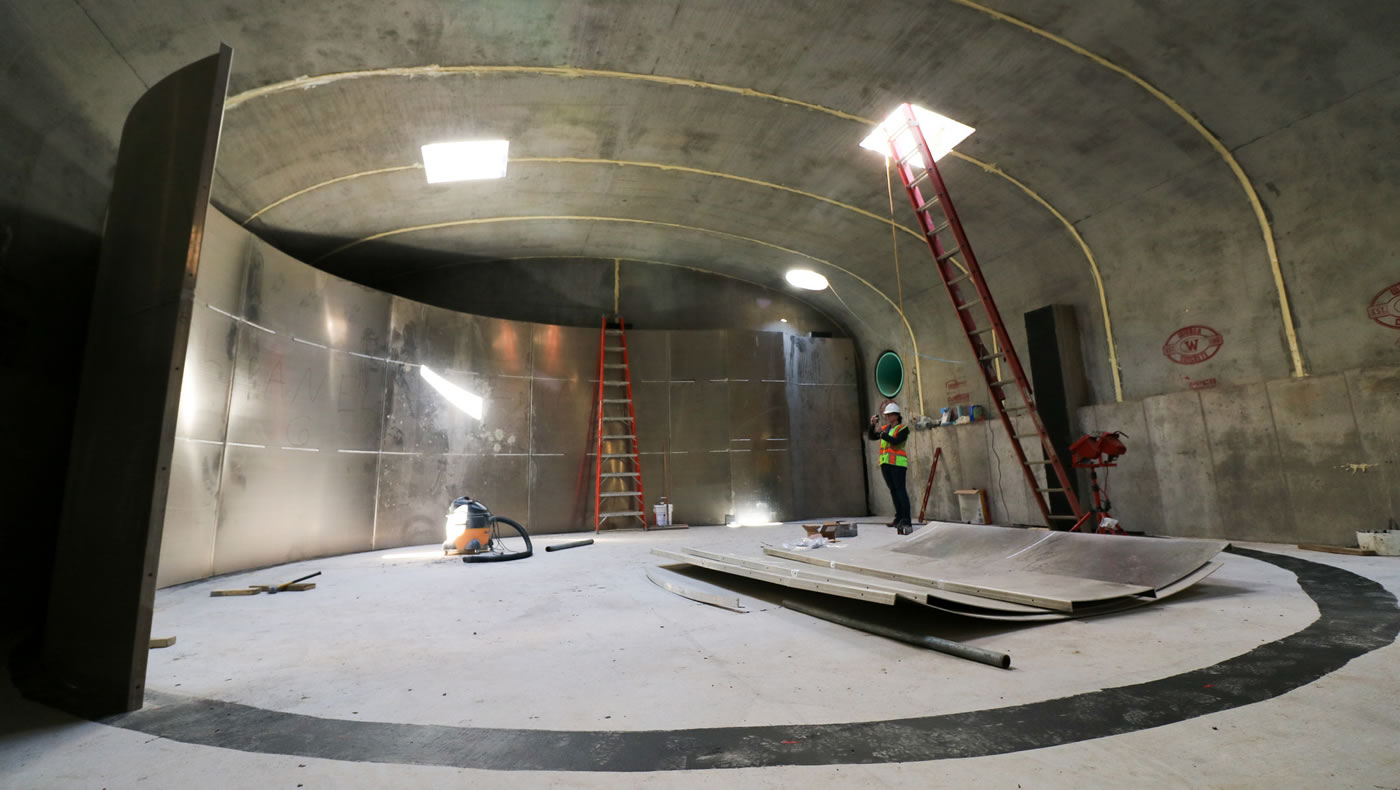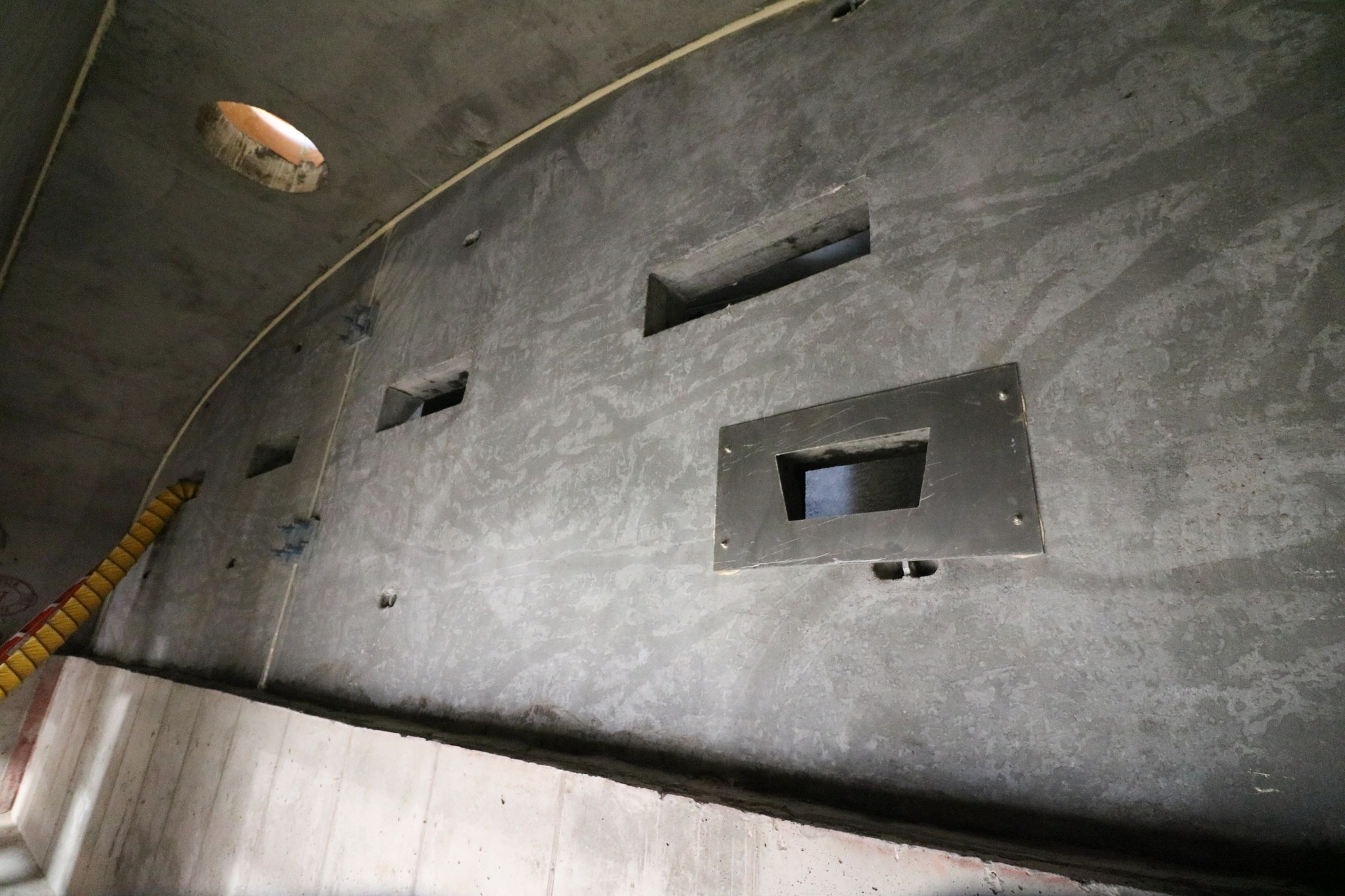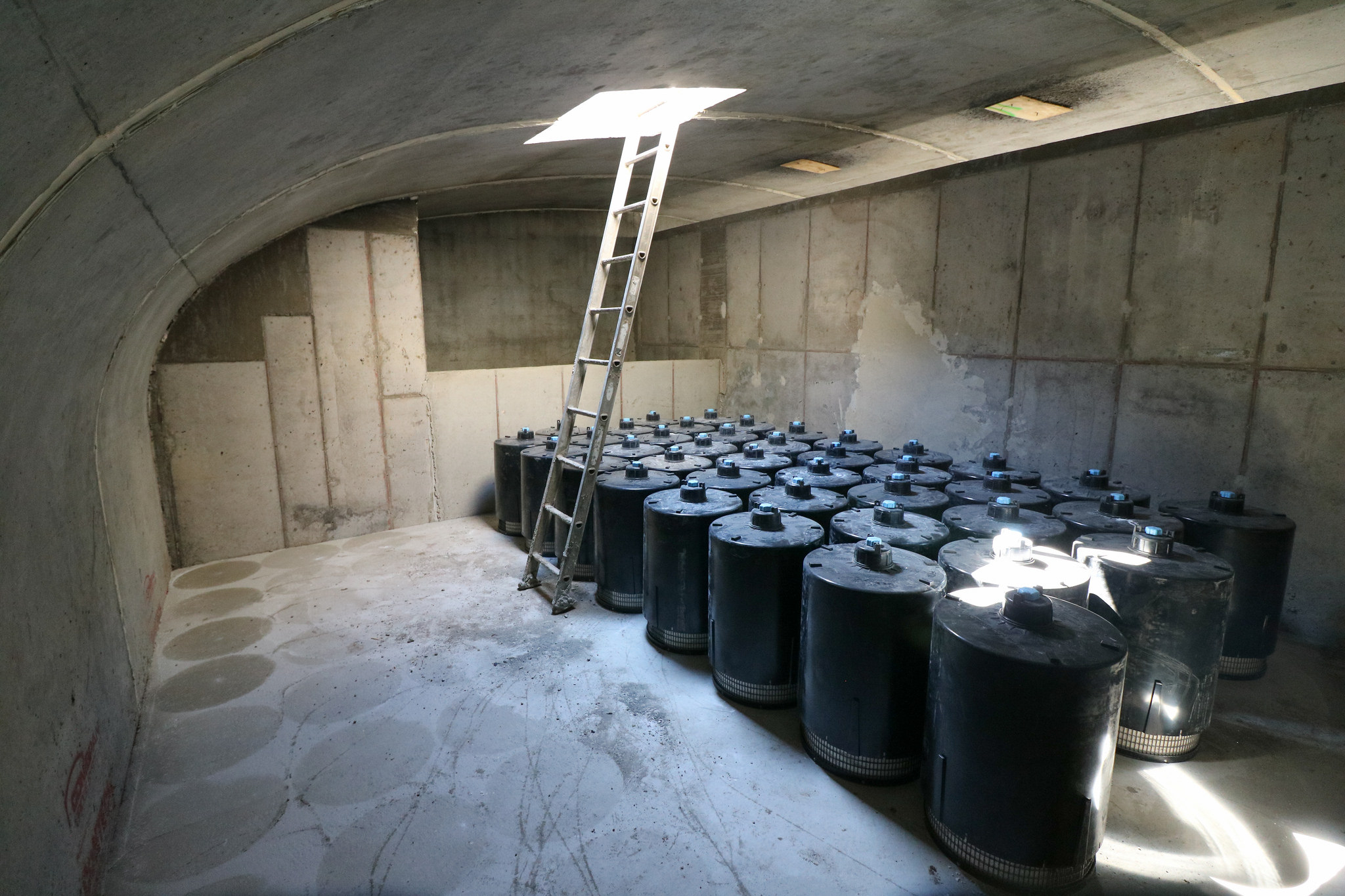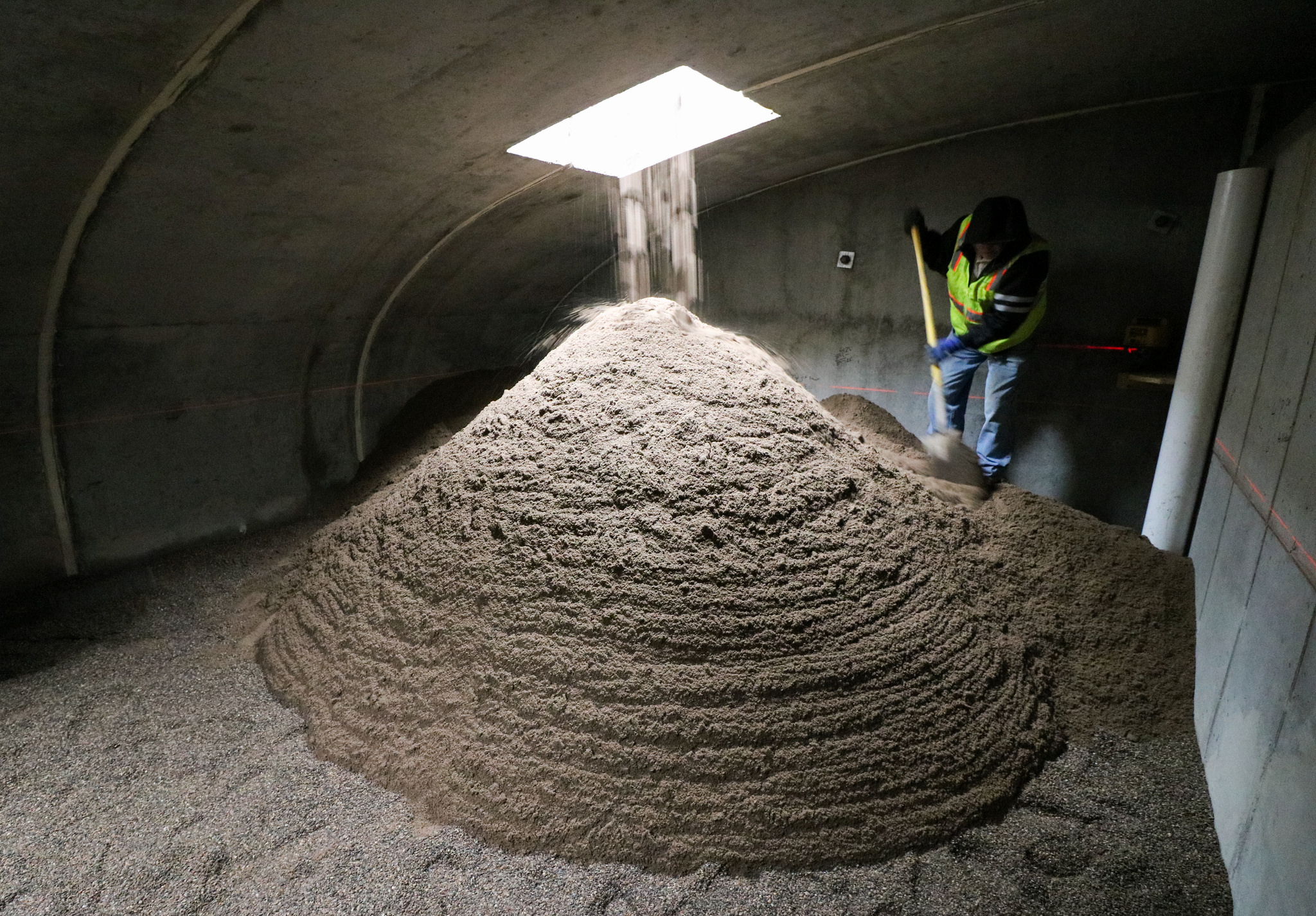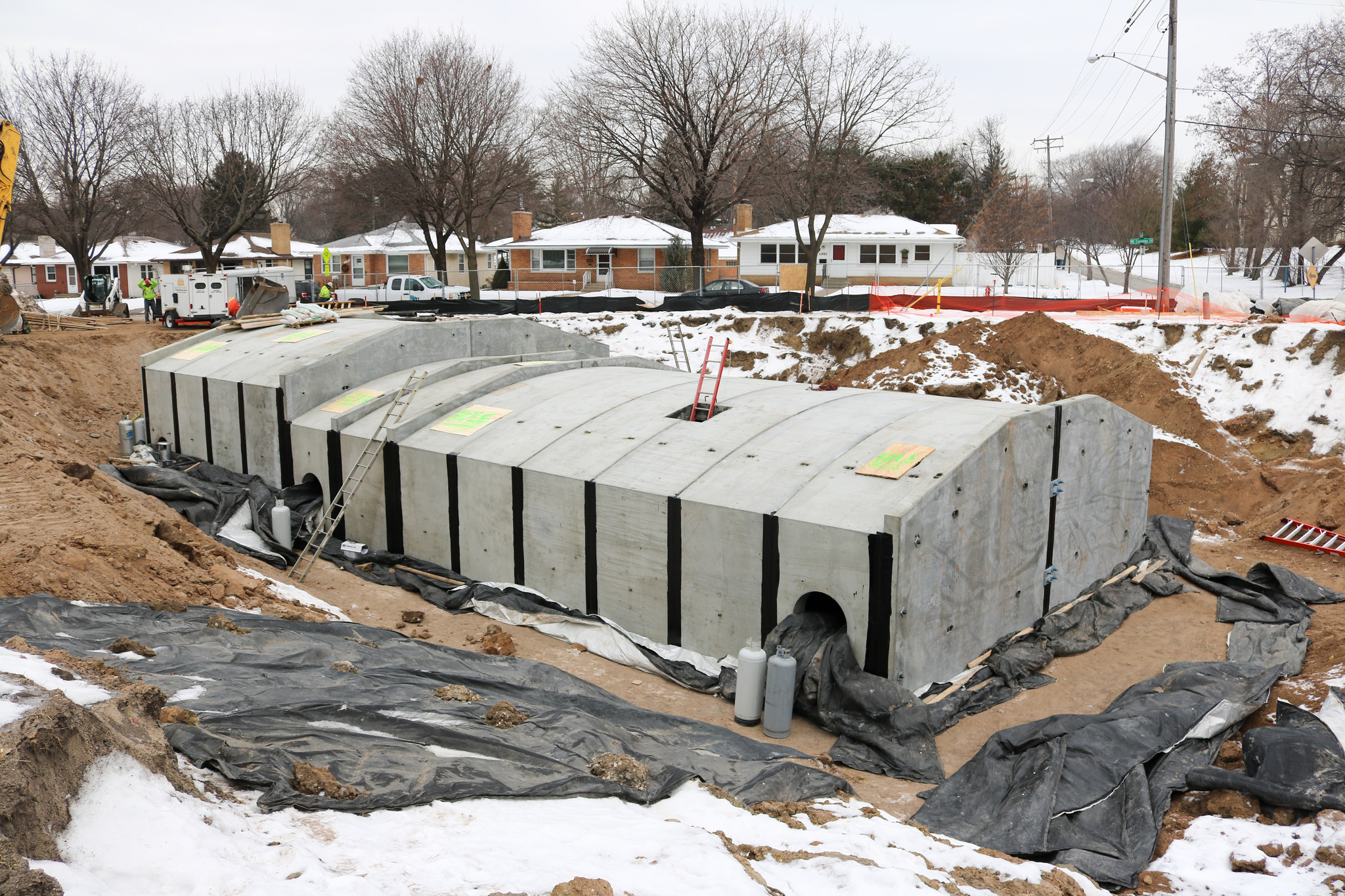News / April 06, 2016
A Peek Inside Our New High-Tech Treatment Facility

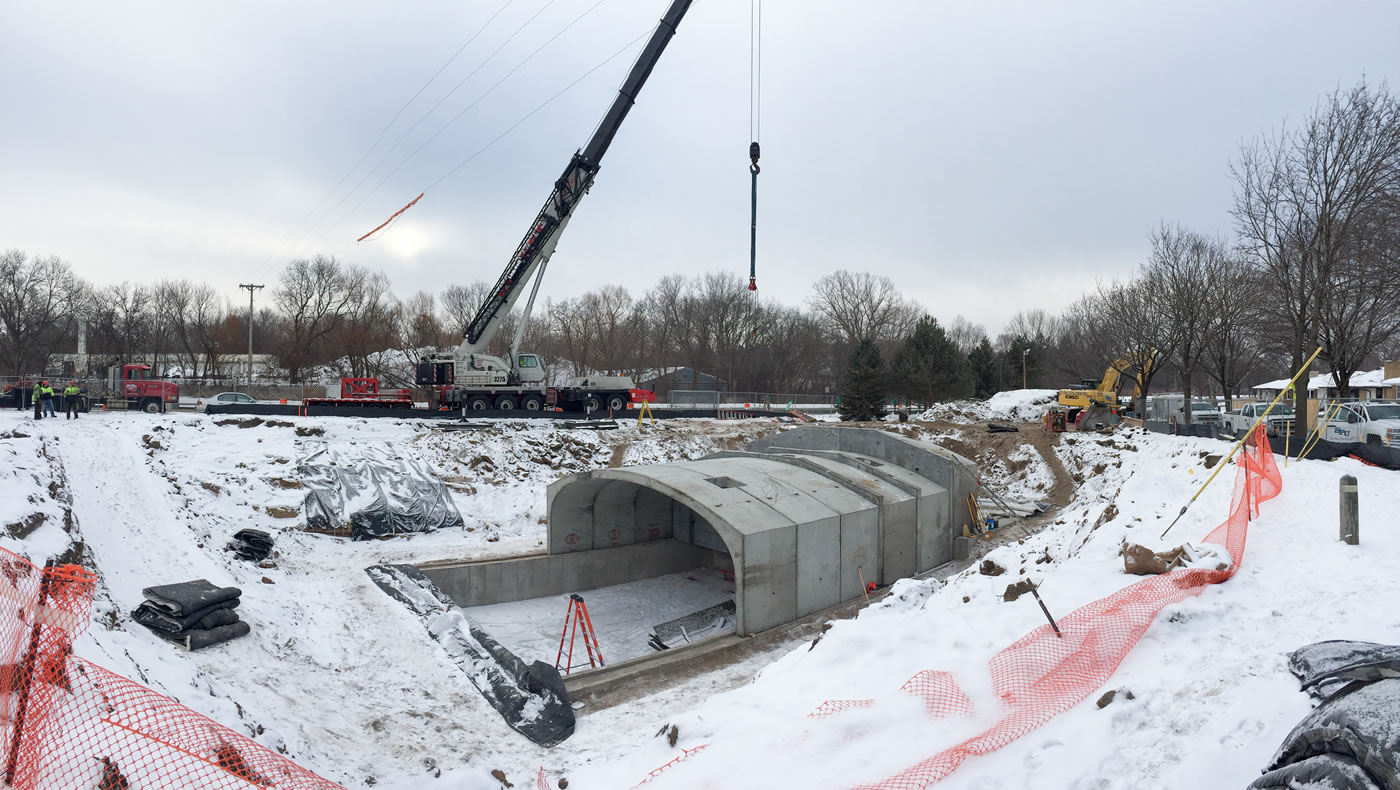
It’s rare to find an opportunity to capture and clean polluted runoff from half a city. But that’s exactly what our new state-of-the-art treatment system is designed to do for St. Anthony Village.
The St. Anthony Regional Stormwater Treatment and Research System, slated for completion this summer, sits on a choke point for stormwater runoff. Nearly 600 acres of urban land drains through a single stormpipe on the border of St. Anthony and Northeast Minneapolis. Right now, that pipe carries an estimated 169 million gallons of untreated runoff — loaded with 61 tons of solids and nearly 400 pounds of phosphorus — directly into the Mississippi River each year.
The giant, bunker-like concrete structure you see in the photos is designed to grab as much of that polluted runoff as possible and run it through a series filtration devices — some simple, others high-tech. Together, these devices will remove an estimated 63 percent of solids and 47 percent of total phosphorus (including 18 percent of hard-to-remove dissolved phosphorus). We’ll be continually monitoring the system’s performance to track how well each of the different filters performs.
The entire facility will soon disappear underground as workers backfill around the site and restore the turf above it. In the meantime, enjoy these unique glimpses into one of our biggest and proudest clean water investments of 2016. You can also read more about the system and how it works on our project page.
